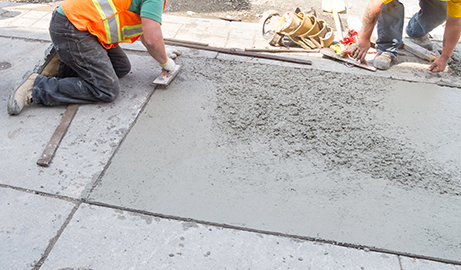Sidewalks, walkways, ramps, and dumpster pads - when it comes to keeping your property safe, accessible, and clean-looking, concrete flatwork does the heavy lifting. In high-traffic cities like Seattle, Bellevue, and Tacoma, it provides the durable, low-maintenance foundation that businesses and municipalities rely on.
Whether you're upgrading curb appeal in Kirkland or adding ADA-accessible routes in Kent, flatwork is the quiet workhorse of exterior infrastructure.
What Is Concrete Flatwork?
Flatwork refers to any horizontal concrete surface poured on a flat plane. That includes:
- Sidewalks
- Driveways and approaches
- Patios and courtyards
- ADA-compliant ramps
- Dumpster and utility pads
- Loading dock platforms
- Concrete floors for garages or basements
Flatwork differs from vertical concrete structures, such as walls or columns. It’s built for stability and wear resistance over long periods, even under pressure or foot traffic.
Why It Matters
Concrete is strong, but it’s also economical. According to the Portland Cement Association, properly installed concrete flatwork can last 30 to 40 years with minimal maintenance. That makes it a long-term investment for property owners focused on reducing liabilities and future costs.
In the Pacific Northwest, flatwork helps:
- Prevent trip hazards from uneven or broken walkways.
- Improve drainage by directing stormwater to catch basins or green areas.
- Increase safety and accessibility in parking lots and entries.
- Enhance curb appeal and improve property value.
Flatwork also provides a stable base for other materials, such as pavers or modular walls, and plays a key role in site functionality and pedestrian safety.
Common Issues (and How to Avoid Them)
In places like Renton, Everett, or Auburn, changing weather conditions can cause issues like cracking or settlement if concrete isn’t installed correctly. Factors that reduce flatwork performance include:
- Poor subgrade compaction
- Inadequate drainage or slope
- Low-quality concrete mix
- No control joints or expansion gaps
When these issues are addressed during planning and construction, the final surface performs longer and requires fewer repairs.
Tips for Long-Term Durability:
- Use high-strength concrete (typically 3,500–4,000 psi for commercial walkways).
- Install control joints every 4–6 feet to control cracking.
- Include rebar or wire mesh reinforcement for thicker slabs.
- Ensure water runoff is appropriately managed with proper pitch or drainage structures.
ADA Compliance and Public Safety
Sidewalks and pedestrian routes must comply with the Americans with Disabilities Act (ADA). That includes:
- Ramps with slopes no greater than 1:12
- Detectable warning strips near roadways or crosswalks
- Clear path widths of at least 36 inches
According to the CDC, 1 in 4 adults in the U.S. has a disability. Designing accessible routes isn’t just required—it also improves usability for all visitors, employees, and tenants.
Applications Across Property Types
From SeaTac airport to Bellevue shopping centers, concrete flatwork supports daily operations:
- Retail centers: Safe, clean walkways improve customer experience.
- Multi-family complexes: Accessible paths and ramps add long-term value and reduce risk.
- Government facilities: Durable surfaces handle foot traffic and public use.
- Commercial properties: Dumpster pads and loading areas stay stable under heavy use.
Final Thoughts
Concrete flatwork is one of those things you don’t think about—until it fails. But with the right mix, design, and installation, it can serve your property for decades. In Seattle-area cities where wet weather, tree roots, and freeze-thaw cycles take their toll, well-constructed flatwork helps maintain safety, function, and compliance across your entire site.
and
Subscribe to our newsletter
Lorem ipsum dolor sit amet, consectetur adipiscing elit. Suspendisse varius enim in eros elementum tristique.



